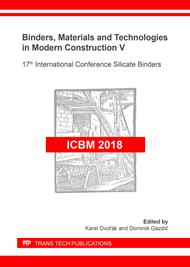p.125
p.131
p.137
p.143
p.149
p.155
p.161
p.167
p.173
Sulphur Dioxide Emissions during the Firing of Ceramic Bodies Based on Class C Fly Ash
Abstract:
Fluid fuel combustion technology in coal-fired power plants is very popular in the Czech Republic, resulting in a relatively high production of a specific by-product - fluidized fly ash (class C according to ASTM definition), which differs from the classical high-temperature fly ash in mineralogical composition with a high sulphur content of anhydrite CaSO4. Fluidized ash is not yet used in the production of fired building materials, where it could be used as a source of calcium oxide (for example, the production of porous ceramic tiles). However, high volume of sulphur dioxide emissions during the re-firing of fluidized fly ash in ceramic raw materials mixtures has been solved. The aim of the paper is definition of temperature ranges of anhydrite decomposition (formation of SO2 emission) from pure class C (fluidized) fly ashes from different sources (power plants) depending on granulometry of fly ash especially.
Info:
Periodical:
Pages:
149-154
Citation:
Online since:
August 2019
Authors:
Keywords:
Price:
Сopyright:
© 2019 Trans Tech Publications Ltd. All Rights Reserved
Share:
Citation:


